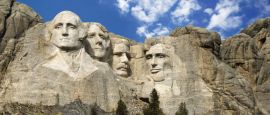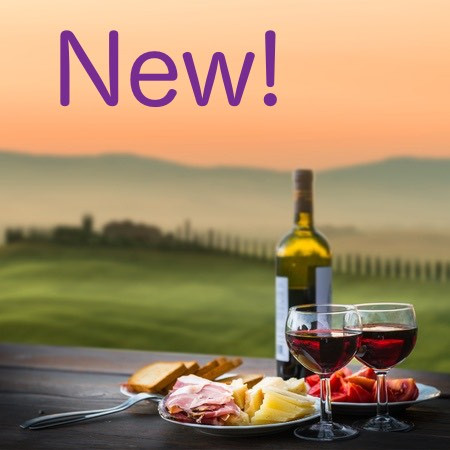Getting around United States of America
Given the vast size of the United States, domestic air travel is often the most efficient way to cover long distances. The country is served by a large network of airports, ranging from major international hubs to smaller regional terminals.
Major carriers such as American Airlines, Delta, United, and Alaska Airlines operate frequent services between cities, while low-cost airlines like Southwest, JetBlue, Spirit, and Frontier offer budget-friendly alternatives—though often with added fees for baggage and seat selection.
The United States is a country made for road trips. With a vast and well-maintained network of highways and scenic byways, driving offers the freedom to explore small towns, national parks, and off-the-beaten-track gems at your own pace.
Motorways, known as interstates, connect nearly every part of the country and are toll-free in most areas. Petrol stations, rest stops, and roadside diners are plentiful, making long drives relatively comfortable. For more scenic or relaxed routes, state highways and back roads can be a joy to explore.
Parking is widely available outside city centres, but in urban areas, it can be expensive or limited. GPS navigation is helpful, though it's wise to have a map or offline app as a backup, especially in remote regions with patchy signals.
Road quality in the United States is generally good, particularly on major routes like interstates and primary highways. These roads are well-maintained, clearly marked, and suitable for long-distance travel. In more remote areas, or in desert and mountainous regions, road conditions can vary—some may be narrow, unpaved, or affected by weather. Urban roads may suffer from congestion and potholes, particularly in older cities, but driving remains manageable with patience and awareness.
Roads in the USA fall into several categories:
• Interstate highways – High-speed, multi-lane roads forming a national network (e.g. I-95, I-10). Ideal for long-distance travel.
• U.S. highways – Older national routes that often run parallel to interstates. Slower, but more scenic and with local access.
• State highways – Managed by individual states, these vary in size and quality but can be useful for regional travel.
• County roads and local roads – These serve rural areas, small towns, and neighbourhoods. They may be unpaved in very remote areas.
• Scenic byways – Designated routes chosen for their natural, historic, or cultural appeal. Great for leisurely road trips.
Major international car hire companies such as Hertz, Avis, Enterprise, and Budget operate widely, with rental offices in airports, cities, and tourist areas. Booking in advance is recommended, especially during peak travel seasons. Most companies require drivers to be at least 21 years old, although a surcharge may apply for those under 25. Automatic transmission vehicles are standard, and GPS or sat nav systems are often available as optional extras.
Taxis are available in most U.S. cities, but their reliability and cost can vary. There is no national standard for colour, size, or signage. For example, while yellow taxis are iconic in New York City, other cities may use white, black, or multi-coloured vehicles. Most urban taxis are metered, and fares typically include a base rate plus a per-mile charge, with tipping (around 10–15%) expected.
Ride-hailing services like Uber and Lyft are becoming popular. They are widely available across the country, though coverage may be limited in rural areas or subject to local regulations in some states or cities.
Cycling is a growing part of the travel scene in the U.S., especially in states and cities that prioritise bike-friendly infrastructure. Popular destinations for cycling holidays include Oregon, Colorado, and Vermont, where scenic byways and mountain routes attract cyclists of all levels. The Adventure Cycling Association maps out cross-country routes like the TransAmerica Trail, while places like Moab, Utah, are known for mountain biking. Many cities now offer bike-share schemes, and cycle lanes are increasingly common in urban centres. However, outside designated areas, roads can be car-centric, so planning and safety precautions are essential for longer bike trips.
Major coach providers include Greyhound, Megabus, FlixBus, and Peter Pan, with extensive networks connecting cities, towns, and even remote regions. Coaches are generally comfortable, air-conditioned, and equipped with Wi-Fi and power outlets. Fares are competitive, particularly if booked in advance, and routes often include overnight services. While journey times can be longer than flying, coaches offer a scenic and budget-friendly alternative for cross-country travel or regional exploration.
Road rules in the United States are broadly similar across states, but there can be regional variations. Driving is on the right-hand side, and seat belts are mandatory for all occupants. Mobile phone use while driving is restricted or prohibited in many states unless hands-free.
Speed limits vary depending on the type of road and location. On interstates, limits typically range from 65 to 75 mph (105–120 km/h), though some rural stretches allow up to 80 mph (130 km/h). In urban areas, the limit may drop to 25–35 mph (40–55 km/h), and in school zones or residential neighbourhoods, even lower. Always watch for posted signs, as enforcement can be strict.
Drink-driving laws are strictly enforced. The legal blood alcohol limit is 0.08% for drivers aged 21 and over nationwide. For drivers under the age of 21, most states enforce zero-tolerance laws, meaning any detectable alcohol in the system can lead to penalties.
AAA (American Automobile Association) is a major provider, offering roadside help such as towing, jump-starts, tyre changes, and lockout services. Many car hire companies also include basic breakdown cover with the rental agreement, and additional protection can be purchased. Mobile coverage is generally good on major roads but may be limited in remote areas—it's wise to have emergency contact numbers saved and, if venturing far off-grid, to carry water, snacks, and a physical map just in case.
Foreign visitors intending to drive in the United States must carry a valid driving licence from their home country. Most states accept licences issued in English-speaking countries (such as the UK, Ireland, Australia, and New Zealand), but travellers from non-English-speaking countries are usually advised to obtain an International Driving Permit (IDP) alongside their national licence. A passport and a credit card in the driver's name are typically required when hiring a vehicle. Visitors should ensure that the hire agreement includes valid insurance—either through the rental company or external travel cover—as U.S. liability and damage costs can be high.
Urban transport in the United States varies widely by city, but several major metropolitan areas offer metro or subway systems that provide a convenient way to get around. The most extensive is the New York City Subway, operating 24 hours a day with hundreds of stations. Other cities with rail-based public transport include Washington, D.C. (Metrorail), Chicago (the 'L'), Boston (the T), San Francisco (BART and Muni Metro), Los Angeles (Metro Rail), Philadelphia (SEPTA), and Atlanta (MARTA). Additional systems operate in Miami, Baltimore, Cleveland, Seattle, Minneapolis–St. Paul, Portland (Oregon), St. Louis, and Denver—though the extent and frequency of service vary considerably.
While some cities, like New York and Boston, are quite walkable, many others—particularly in the Sun Belt and the West, such as Houston, Phoenix, or Los Angeles—are more spread out and car-dependent. Buses, trams, and bike-share programmes help fill the gaps in many urban areas. Ride-hailing services like Uber and Lyft are also widely available and often used where public transport is limited or inconvenient.
Rail travel in the United States is limited compared to Europe but can still be a scenic and comfortable way to explore certain regions. The national rail provider, Amtrak, operates long-distance and regional services linking major cities and towns, especially along the East Coast and in parts of California. Rail coverage is more limited in the Midwest and South. Trains generally offer spacious seating, Wi-Fi, and dining options, although journey times can be slower than flying.
Notable routes include the California Zephyr (Chicago to San Francisco), the Empire Builder (Chicago to Seattle), and the Northeast Corridor, which connects Boston, New York City, Philadelphia, and Washington, D.C., with frequent, high-speed service.
Amtrak offers a few rail passes, including one that allows visitors to hop on/off across 500 destinations.
Ferries operate in regions such as the Pacific Northwest, where boats connect Seattle with nearby islands. In New York City, the Staten Island Ferry offers a free and scenic commute, while in San Francisco, ferries cross the bay to places like Sausalito and Oakland. River cruises along the Mississippi and Ohio Rivers are popular for leisurely exploration, and in states like Florida, Louisiana, and Alaska, boat tours and water taxis add a unique dimension to getting around.
Do you have any Feedback about this page?
© 2025 Columbus Travel Media Ltd. All rights reserved. No part of this site may be reproduced without our written permission, click here for information on Columbus Content Solutions.





 You know where
You know where
